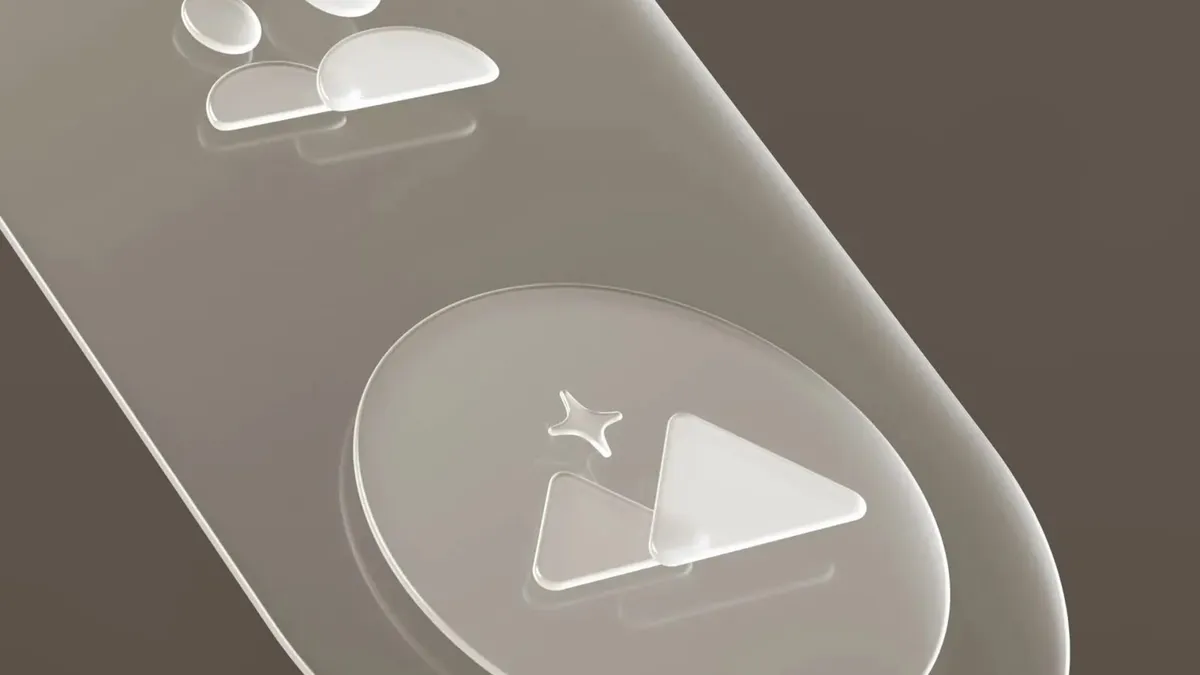
Designer Sebastiaan de With has unveiled an intriguing preview of the much-anticipated iOS redesign from Apple, showcasing detailed mockups and a design philosophy that may transform user interactions with their devices. With the Worldwide Developers Conference (WWDC) just around the corner, de With, who is the co-founder of the photography app Lux and a former Apple designer, presents his conceptual framework dubbed Living Glass. This concept imagines interfaces that reflect the material properties of Apple's glass-screened devices, aiming to create a more immersive user experience.
According to de With, if he were Apple, he would describe this innovative interface as one that finally harmonizes with the exquisite material properties of its products. He explains that this approach provides a user experience where the interface feels as if the glass itself is coming alive. However, de With's vision is far more than just superficial changes; it proposes a fundamental transformation toward physicality. Inspired by visionOS, he advocates for interfaces that mimic real-world materials through features like dynamic lighting, reflections, and environmental responsiveness.
To contextualize his vision, de With traces the evolution of iOS design through three distinct eras. He begins with the Shaded Age, spanning from iPhone OS to iOS 6, characterized by heavy reliance on skeuomorphism. This design period utilized realistic textures and shadows, aiding users in transitioning from physical buttons to touch interfaces. The next phase, known as the Flat Age, commenced with the contentious redesign of iOS 7, which stripped away visual effects in favor of a cleaner aesthetic featuring minimal typography and chrome. Although initially stark, de With observes that iOS gradually reintroduced depth through blur effects and subtle shadows over time.
Currently, de With identifies the emergence of a third era, highlighted by features such as Dynamic Island and the new Siri animations. These elements behave more like physical materials rather than static graphics. He notes, "We've come back, in a sense, to skeuomorphic interfaces – but this time not with a lacquer resembling a material. Instead, the interface is clear, graphic, and behaves like things we know from the real world."
Central to de With's Living Glass concept is the notion that all user interface (UI) elements should act as dynamic glass surfaces. This means that buttons would cast realistic shadows, reflect bright content, and exhibit properties akin to surface tension when merging. He envisions a visual hierarchy created through various glass treatments: glossy elements for primary actions, frosted surfaces for secondary controls, and inlaid components that appear embedded in the screen itself. His mockups illustrate tab bars floating above content, app icons exhibiting dynamic reflections, and controls that emerge from background surfaces when activated. This system would automatically manage these effects, ensuring uniformity across all applications.
De With references recent enhancements in iOS, such as Apple's development of automatic icon masking in iOS 18, seen in Dark Mode and tinted icon effects on a black gradient background. He suggests these innovations may be precursors to more dynamic backdrops.
De With argues that current design tools, like Figma, are inadequate for creating the dynamic lighting and responsive behaviors he envisions, which could provide Apple with a competitive edge. His concepts resonate with Apple's overarching design philosophy of integrating hardware and software seamlessly. For instance, just as the early Mac OS X Aqua interface complemented the colorful enclosures of iMacs, the Living Glass concept could make software feel inherently native to glass-screened devices.
While acknowledging the challenges of introducing such complexity to a platform utilized by millions of third-party developers, de With draws parallels to Apple's previous platform transitions that raised the bar for interface design across the industry.
Recent reports from Bloomberg's Mark Gurman suggest that Apple's upcoming redesign will feature glassy effects inspired by visionOS. Apple has also tagged WWDC as a sleek preview event. Whether the actual plans align with de With's vision remains to be seen, but his detailed insights are likely to stir excitement even among the most skeptical Apple users regarding what the company is set to unveil next week for iOS 26 and other operating systems.
In conclusion, de With asserts, "Only Apple can push the state of the art to a new interface that brings the glass of your screen to life." To delve deeper into the design philosophy that inspired his concepts, be sure to explore de With's full write-up available on the Lux Camera website.